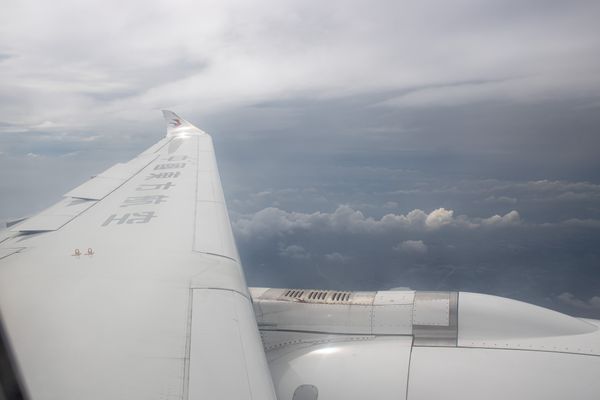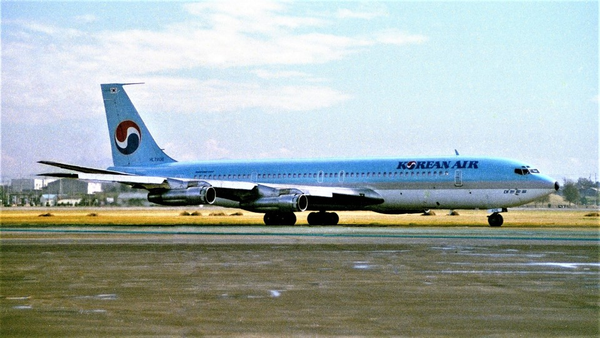The two most common Boeing widebody aircraft you can fly nowadays are the 777 and 787. Both are twin-aisle, twin-engine airliners primarily used on long-haul flights.
But what other characteristics make these Boeing bestsellers so similar...and what sets them apart?
Long Rangers
The 777 and 787 Dreamliner programs have been praised for their long-range capabilities. With the gradual exit of quadjets like the Boeing 747 and Airbus A340, having more efficient long-haul aircraft has been very important in recent history.
Generally speaking, the 777 was Boeing's first twinjet geared toward long-haul operations. The original variant, the 777-200 (non-ER) was built for the so-called "A" market".
This market was primarily geared toward high-density domestic and shorter international routes. United continues to fly its 777-200s on domestic routes, including those to Hawaii.

However, Boeing soon came out with the longer-range 777-200ER and eventually the 777-200LR and 777-300ER. There was also the 777-300 (non-ER), which had a decently long range but was primarily aimed at shorter high-capacity markets.
The 777-200LR offers the most range out of the 777 family, at 8,555 nautical miles. Sadly, the plane never gained much popularity; instead, it was replaced by the larger 777-300ER, which became one of Boeing's best-selling planes.
The 300ER has a smaller range (7,370 nautical miles) but can seat more passengers, which was the airline's deciding factor.
Because the Dreamliner was built with lighter materials, it could fly further. The 787-8 and 787-9 have ranges of 7,355 and 7,635 nautical miles, respectively.
While these are not the most out of any Boeing widebody (they still don't beat the 777-200LR), the Dreamliner family has on average a higher range than the 777s.

Furthermore, the Dreamliner's lighter weight meant it could fly just as far as the 777s but at a lower cost. More fuel-efficient engines played an especially important role here. This is why many of the world's longest flights are operated by Dreamliners.
Boeing's 787-10, the largest Dreamliner, has an impressive range, too, despite it being such a long aircraft. This plane can fly up to 6,430 nautical miles, putting it above the 777-300 non-ER, whose range is 6,030 natural miles.
Capacity and Cost
The 777 family wins when it comes to capacity. Depending on the variant, a typical two-class 777 can seat 313 to 396 passengers. This figure varies depending on how many classes an airline wants to fit in its 777.
Compare this to the 787 family, whose only variant with 330 seats that can fit more than 300 people in a two-class layout is the -10.

An aircraft like the 777-300ER has more space to fit in the most premium seats while also being able to fill standard coach seats. There's not as much flexibility with the Dreamliners to fit in all four classes (First, Business, Premium Economy, and Economy), so seeing First Class cabins on 787s is a rarity.
However, regarding cost, the Dreamliner is a cheaper plane to buy and operate, mainly thanks to the abovementioned factors.
A 787-8 would cost roughly $248.3 million, while the most popular -9 is $292.5 million, and the largest -10 is around $338.4 million.
These are significantly cheaper than the 777-300ER, which would have cost the airline $375.5 million during its production. Of course, buying a new-built 777-300ER is out of the question as Boeing no longer produces the aircraft besides the 777X and freighter aircraft.

The 777 and 787 were never meant to compete with one another, but many airlines are opting for 787s to replace older 777 aircraft.
Both planes have strengths and weaknesses, which make each aircraft family unique. It should never be overlooked that both aircraft families have played a big part in Boeing's success and in connecting the world.
Ryanair to Appeal $302 Million Italian Fine Over Alleged Travel Agency Restrictions » What You Don't Know About Airport Operations That Go Overnight » Mexican Medical Plane Crashes in Galveston Bay During Rescue Mission »
Comments (0)
Add Your Comment
SHARE
TAGS
STORIES boeing 777787 vs 777boeing 787dreamliner777-300er787 dreamlinerboeingRECENTLY PUBLISHED
 VIDEO: What It's Like Onboard China's COMAC C919
We flew onboard China Eastern's COMAC C919 to experience China's homegrown narrow-body up close. From seat comfort to cabin layout to noise levels to tech: how does it really compare with the Boeing 737 and Airbus A320? This review puts all three workhorses under the same spotlight.
TRIP REPORTS
READ MORE »
VIDEO: What It's Like Onboard China's COMAC C919
We flew onboard China Eastern's COMAC C919 to experience China's homegrown narrow-body up close. From seat comfort to cabin layout to noise levels to tech: how does it really compare with the Boeing 737 and Airbus A320? This review puts all three workhorses under the same spotlight.
TRIP REPORTS
READ MORE »
 KAL858: The North Korean Bombing that Shocked the World
Among the 99 passengers boarding Korean Air Flight 858 on November 29, 1987, few could imagine their journey would end as one of aviation's darkest mysteries.
STORIES
READ MORE »
KAL858: The North Korean Bombing that Shocked the World
Among the 99 passengers boarding Korean Air Flight 858 on November 29, 1987, few could imagine their journey would end as one of aviation's darkest mysteries.
STORIES
READ MORE »
 Ghost Networks: The Rise, Fall, and Revival of Fifth-Freedom Flights
Fifth-freedom flights — routes where an airline flies between two countries outside its home base — have always lived in aviation's twilight zone. We chart their rise, their near-disappearance, and the surprising markets where they still thrive today. Then we take you on board a special Seoul-Tokyo fifth-freedom flight to show how the experience stacks up against a typical regional carrier.
TRIP REPORTS
READ MORE »
Ghost Networks: The Rise, Fall, and Revival of Fifth-Freedom Flights
Fifth-freedom flights — routes where an airline flies between two countries outside its home base — have always lived in aviation's twilight zone. We chart their rise, their near-disappearance, and the surprising markets where they still thrive today. Then we take you on board a special Seoul-Tokyo fifth-freedom flight to show how the experience stacks up against a typical regional carrier.
TRIP REPORTS
READ MORE »



